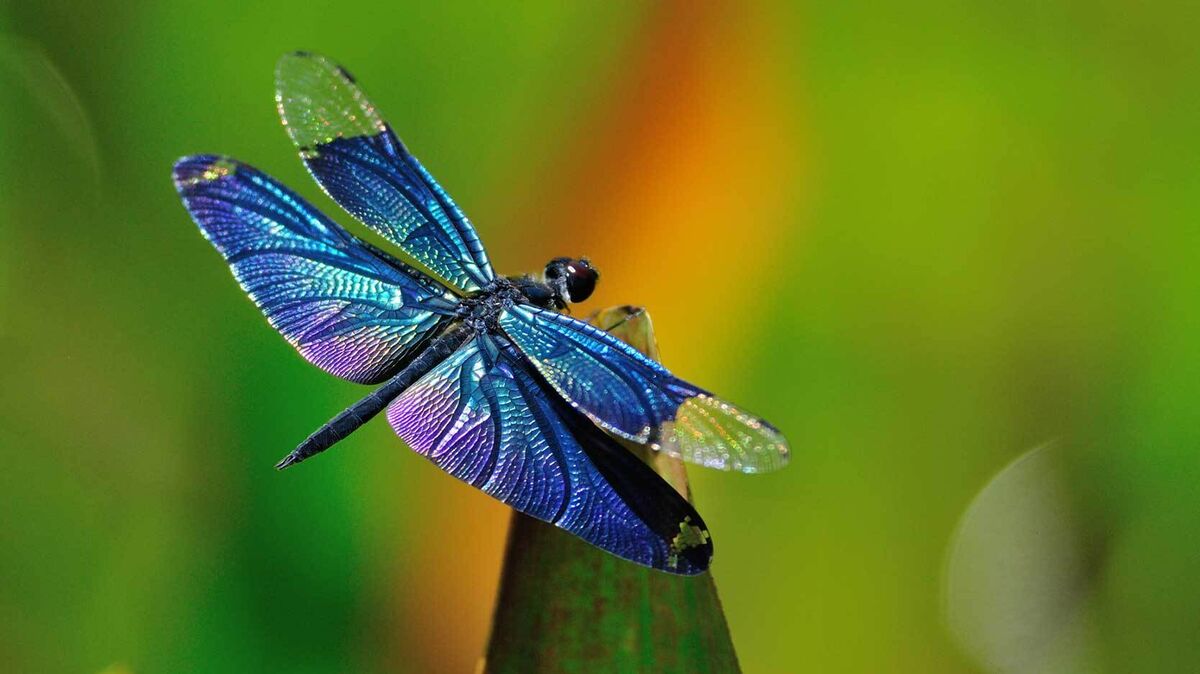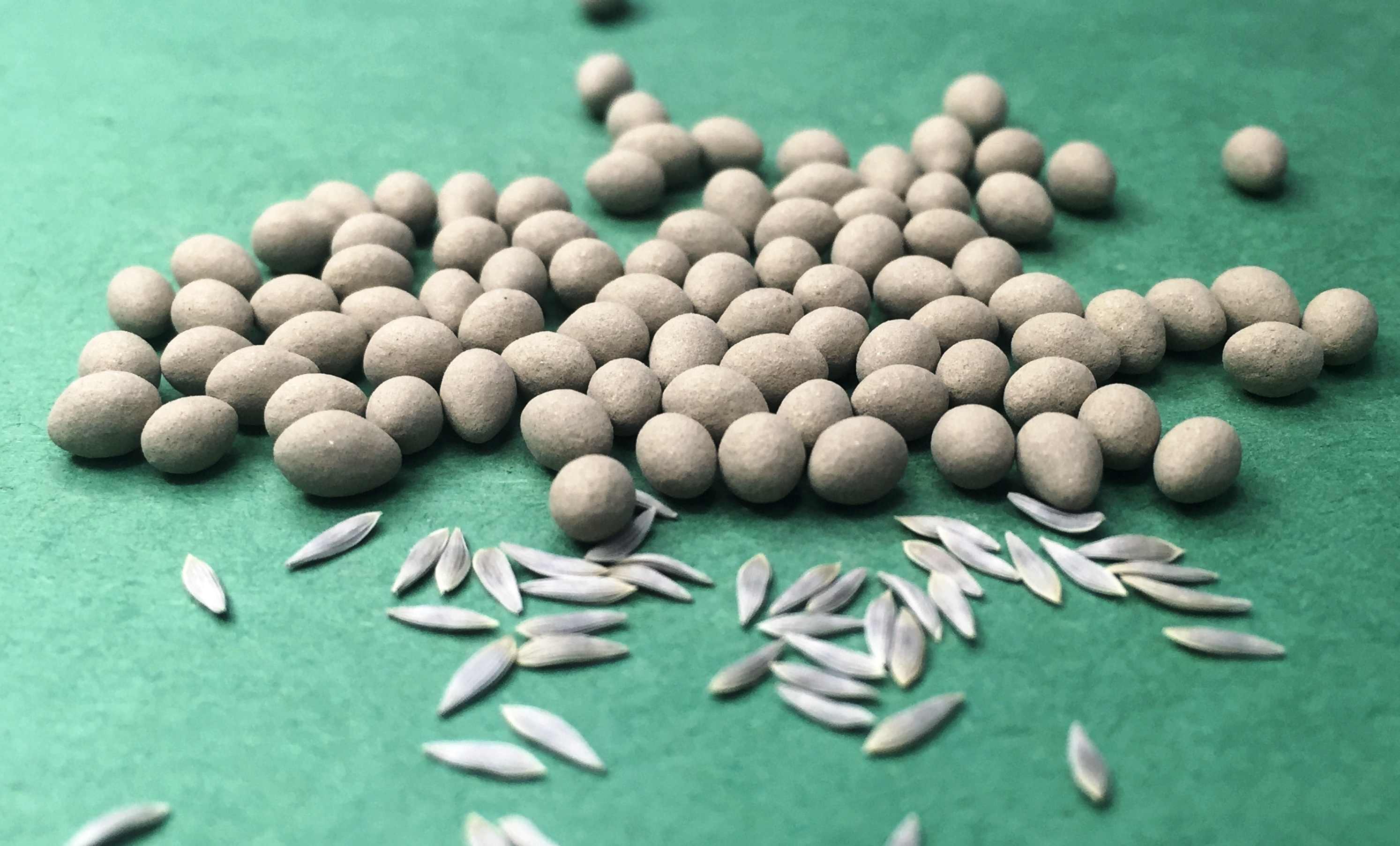Home>Gardening News and Trends>Latest News>How Do Insects Get Their Oxygen


Latest News
How Do Insects Get Their Oxygen
Modified: January 22, 2024
Discover the latest news on how insects obtain oxygen to survive and thrive. Explore the fascinating mechanisms behind their respiratory systems and adaptations.
(Many of the links in this article redirect to a specific reviewed product. Your purchase of these products through affiliate links helps to generate commission for Chicagolandgardening.com, at no extra cost. Learn more)
Table of Contents
Introduction
Insects are incredibly diverse creatures that have captured the fascination of humans for centuries. From fluttering butterflies to buzzing bees, these tiny creatures are found in almost every corner of the planet. One of the many intriguing aspects of insect biology is how they obtain the oxygen they need to survive.
Insects, like all living organisms, rely on oxygen to fuel their metabolic processes. However, unlike mammals that have lungs to extract oxygen from the air, insects have a unique respiratory system that allows them to efficiently obtain oxygen for their needs.
Understanding how insects get their oxygen is not only fascinating from a scientific perspective, but it also sheds light on their ability to thrive in diverse environments and adapt to various ecological niches.
In this article, we will explore the intricate respiratory systems of insects and delve into the mechanisms that enable these fascinating creatures to breathe. We will discuss the process of direct gas exchange, the tracheal system, spiracles, tracheae, air tubes, and how oxygen is transported within their bodies.
So let’s embark on this journey into the world of insect respiration, where we uncover the remarkable adaptations that allow them to thrive and survive in our natural world.
Respiratory Systems of Insects
Insects have evolved a remarkable array of respiratory systems that allow them to efficiently obtain oxygen from their environment. Unlike mammals, which have a centralized respiratory system with lungs, insects have a decentralized system consisting of small tubes called tracheae.
Their respiratory system can be classified into two main categories: direct gas exchange and the tracheal system.
The direct gas exchange pathway is seen in some small insects, where oxygen diffuses directly through their thin exoskeleton and into their cells. This primitive method is only suitable for small insects with low oxygen demands, as the diffusion distance is limited by the insect’s size.
For most insects, the tracheal system is the primary respiratory mechanism. The tracheal system consists of a network of tubes that extend throughout the insect’s body, delivering oxygen directly to the tissues.
At the surface of the insect’s exoskeleton, there are tiny openings called spiracles. These spiracles serve as the entrance and exit points for air. Insects have a varying number of spiracles, depending on their species and body size. For example, caterpillars have spiracles along the sides of their body, while adult insects typically have spiracles located on their abdomen and thorax.
Once the air enters the spiracles, it travels through the tracheae, which are the main tubes of the respiratory system. Tracheae branch off into finer tubes called tracheoles, which penetrate the insect’s tissues. The tracheoles are incredibly thin, ensuring that oxygen can readily reach the cells.
The tracheal system functions similarly to a network of microscopic straws, allowing oxygen to be distributed efficiently throughout the insect’s body. This decentralized system enables insects to have a high metabolic rate and cope with various environmental conditions and physical challenges.
Insects can regulate the opening and closing of their spiracles, which helps minimize water loss in arid environments and prevents the entry of harmful gases or pathogens. This versatile respiratory system enables insects to thrive in diverse habitats, ranging from deserts to rainforests, underwater to aerial environments.
Now that we have explored the respiratory systems of insects, let’s delve deeper into the fascinating intricacies of their tracheal system and understand how oxygen is transported within their bodies.
Direct Gas Exchange
Direct gas exchange is a primitive form of respiration found in some small insects, such as mites and springtails. In this process, the oxygen directly diffuses through the insect’s thin exoskeleton and into their cells, bypassing the need for specialized respiratory structures.
Due to their small size, these insects have a larger surface area-to-volume ratio, allowing for efficient gas exchange through their body surface. The oxygen in the surrounding environment can easily penetrate their exoskeleton and reach their tissues.
However, direct gas exchange is limited by the insect’s size. As the body size increases, the distance between the outer surface and the cells becomes greater, making it more challenging for oxygen to diffuse across the distance in a timely manner.
Thus, direct gas exchange is typically only employed by very small insects with low metabolic rates and oxygen demands. These insects often live in moist environments, where there is a higher concentration of oxygen and better diffusion rates.
It is important to note that while direct gas exchange is not the primary respiratory mechanism for most insects, it still plays a role in oxygen uptake and can supplement the tracheal system in certain circumstances.
Now, let’s explore the intricate tracheal system that forms the basis of respiration in the majority of insects.
Tracheal System
The tracheal system is the primary respiratory mechanism in most insects. It is a network of tubes known as tracheae that extend throughout the insect’s body, delivering oxygen directly to the tissues.
Instead of relying on the centralized respiratory organs like lungs, insects have evolved this decentralized system to efficiently distribute oxygen. The tracheae branch off into finer tubes called tracheoles, which penetrate the insect’s tissues.
The tracheal system begins with openings called spiracles on the surface of the insect’s exoskeleton. Insects have a varying number of spiracles, depending on their species and body size. These spiracles serve as the entrance and exit points for air.
Once the air enters the spiracles, it travels through the tracheae, which are the main tubes of the tracheal system. These tubes extend throughout the body, providing a pathway for the oxygen to reach every cell.
The tracheae are lined with a thin, flexible cuticle that allows for easy passage of gases. This lining prevents the collapse of the tracheae and ensures the efficient flow of air.
The tracheae branch into smaller tubes called tracheoles, which are incredibly thin and can penetrate even the tiniest crevices in the insect’s tissues. The tracheoles closely associate with individual cells, allowing oxygen to directly diffuse into the cell and carbon dioxide to diffuse out.
The tracheal system provides insects with a high surface area for gas exchange. Since the oxygen doesn’t have to travel through a centralized system, it can reach the cells quickly, enabling insects to have a high metabolic rate and meet their energetic needs.
Furthermore, the tracheal system offers flexibility and adaptability to a wide range of environmental conditions. Insects have the ability to regulate the opening and closing of their spiracles, which helps them conserve water in arid environments and prevent the entry of harmful substances.
The tracheal system is a remarkable adaptation that allows insects to thrive in diverse habitats, including terrestrial, aquatic, and aerial environments. It enables them to sustain their energy-demanding activities and survive in challenging conditions.
Now that we have explored the intricacies of the tracheal system, let’s delve deeper into the specialized structures that facilitate respiration in insects.
Spiracles
Spiracles are the specialized openings on the surface of an insect’s exoskeleton that serve as the entrance and exit points for air in the respiratory system. They are essential for the proper functioning of the tracheal system and play a crucial role in gas exchange.
The number and location of spiracles vary among insect species. Generally, insects have pairs of spiracles along the sides of their body segments. The positioning of spiracles can differ between larvae and adults, as well as among different insect orders.
Spiracles are typically equipped with valves that allow insects to control the opening and closing of these openings. This mechanism enables insects to regulate the entry and exit of air and minimize water loss, particularly in arid environments.
The movements of the spiracle valves are controlled by muscles and can be influenced by factors such as oxygen levels, carbon dioxide levels, temperature, and humidity. This dynamic control allows insects to respond to changes in their surroundings and maintain optimal respiratory conditions.
Some insects, like certain aquatic larvae or those living in oxygen-limited environments, have specialized adaptations in their spiracles. These adaptations may include elongated or specialized spiracles that enhance their ability to extract oxygen from the water or low-oxygen environments.
Interestingly, spiracles not only serve as sites for gas exchange but can also act as sensory structures. Insects have sensory receptors associated with their spiracles, allowing them to detect environmental cues such as temperature, humidity, and chemical signals.
The size of the spiracles and the opening and closing of the valves also play a role in determining the insect’s metabolic rate. Insects with larger spiracles and more open valves have a higher oxygen uptake and metabolic rate compared to those with smaller spiracles and more closed valves.
Overall, spiracles are essential components of the insect respiratory system. They enable the entry of air into the tracheal system, provide a means for gas exchange, and allow insects to regulate their respiration in response to environmental conditions. These specialized openings contribute to the remarkable adaptability and success of insects in various habitats and environmental challenges.
Now, let’s explore the intricate network of tracheae and air tubes that facilitate the transport of oxygen within the insect’s body.
Tracheae
Tracheae are the main tubes that form the network of the tracheal system in insects. These tubes serve as the highways for the transport of gases, primarily oxygen, throughout the insect’s body.
The tracheae start from the openings called spiracles on the insect’s exoskeleton and extend throughout the body, branching into smaller tubes called tracheoles that penetrate the insect’s tissues.
Tracheae are lined with a thin, flexible cuticle that allows for the easy passage of gases. This lining prevents the collapse of the tracheae and ensures a continuous flow of air.
The size and distribution of tracheae vary among insect species and can be influenced by factors such as body size and metabolic requirements. In larger insects, the tracheal system is more complex and extensive, with multiple branches and interconnected networks throughout the body.
Tracheae have a high surface area-to-volume ratio, which allows for efficient gas exchange. The large surface area of the tracheal system ensures that oxygen can quickly reach the cells that require it and facilitate the removal of carbon dioxide, the waste product of cellular respiration.
The transport of oxygen through the tracheae occurs through a combination of factors, including diffusion and rhythmic movements of the insect’s body or respiratory organs. Diffusion is the primary means of gas movement within the tracheae, with oxygen moving from areas of high concentration to areas of low concentration.
The tracheae not only transport oxygen but also play a role in removing metabolic waste, such as carbon dioxide, from the cells. Carbon dioxide diffuses from the cells into the tracheae and is expelled through the spiracles.
The structure and arrangement of the tracheae allow insects to efficiently deliver oxygen to all the necessary tissues and cells in their body. By providing a direct pathway for oxygen transport, the tracheae contribute to the incredible adaptability and metabolic efficiency that insects exhibit in various environments.
Now that we understand the role of tracheae, let’s explore the finer tubes within the tracheal system called tracheoles and how they facilitate oxygen delivery to individual cells.
Air Tubes
Within the tracheal system of insects, there are smaller tubes called tracheoles that extend from the tracheae and penetrate the insect’s tissues. These tracheoles serve as the final destination for oxygen delivery to individual cells.
The tracheoles are incredibly thin and highly branched, ensuring a close association with the cells that require oxygen. This network of fine tubes allows for a higher surface area for gas exchange and facilitates rapid diffusion of oxygen into the cells.
The walls of the tracheoles are composed of a thin, permeable cuticle that allows for the exchange of gases between the tracheoles and the surrounding cells. Oxygen diffuses from the tracheoles into the cells, where it is used for cellular respiration and energy production.
One remarkable characteristic of tracheoles is their ability to alter their diameter or even collapse. This dynamic behavior is controlled by the insect’s metabolic needs and environmental conditions. When oxygen demand increases, the tracheoles can dilate to allow for greater oxygen flow. Conversely, when oxygen demand decreases or when water conservation is necessary, the tracheoles can constrict or even collapse to minimize water loss and control gas exchange.
The tracheal system, including the tracheae and tracheoles, provides insects with a highly efficient respiratory system. The direct delivery of oxygen to individual cells ensures that metabolic requirements are met, and waste products, such as carbon dioxide, can be efficiently removed.
Moreover, the fine branching of the tracheal system allows insects to adapt to different physiological and environmental conditions. Insects that engage in high-energy activities, such as flying or running, have a more extensive tracheal system to support their greater oxygen demands. In contrast, insects that live in oxygen-limited environments, such as burrowing beetles, may have specialized adaptations in their tracheal system to enhance oxygen uptake.
Overall, the intricate network of tracheae and tracheoles within the tracheal system ensures the efficient transport and delivery of oxygen to individual cells. This system allows insects to thrive in diverse environments and engage in a wide range of behaviors that require energy.
Now that we have explored the role of air tubes in the respiratory system of insects, let’s delve into the mechanisms of oxygen transport within their bodies.
Oxygen Transport in Insects
Insects have evolved efficient mechanisms to transport oxygen from the tracheal system, where gas exchange occurs, to the cells throughout their bodies.
Unlike mammals that rely on a circulating fluid like blood to transport oxygen, insects use a different strategy. Oxygen is transported directly from the tracheoles to the cells via a process called diffusion. This means that oxygen moves across concentration gradients, from areas of high oxygen concentration in the tracheoles to lower concentrations in the cells.
The high metabolic rate of insects, along with the close association between the tracheoles and cells, ensures a rapid diffusion of oxygen. As the cells consume oxygen during cellular respiration, the concentration of oxygen in the cells decreases. This creates a concentration gradient that promotes the diffusion of oxygen from the tracheoles into the cells.
Diffusion alone, however, is not enough to ensure efficient oxygen transport over long distances or in highly active insects like flying insects. To enhance oxygen delivery, insects employ additional mechanisms such as muscular movements and body contractions to facilitate the movement of air within the tracheal system.
For example, in some flying insects, the contraction of flight muscles compresses the tracheal system, forcing air to flow through the system more forcefully. This increases the rate of oxygen delivery to the flight muscles, which require high oxygen levels for sustained flight.
In other cases, insects use body movements like abdominal pumping or wing beating to create airflow within the tracheal system, aiding in the circulation of oxygen. These movements increase ventilation and ensure a fresh supply of oxygen reaches the tissues.
The efficient transport of oxygen in insects is crucial for their survival and ability to perform various activities. Oxygen is vital for supporting their high metabolic rate, which powers their flight, reproduction, feeding, and other essential physiological processes.
By utilizing diffusion and employing additional mechanisms to enhance oxygen transport, insects have adapted to efficiently deliver oxygen to the cells that need it. This enables them to thrive in diverse habitats, including those with low oxygen levels, and engage in a wide range of behaviors and activities.
Now that we have explored the mechanisms of oxygen transport in insects, let’s proceed to understand the oxygen requirements of these incredible creatures.
Oxygen Requirements of Insects
Insects have a wide range of oxygen requirements, which vary depending on various factors including their size, metabolic rate, activity level, and life stage.
The size of an insect plays a significant role in determining its oxygen needs. Generally, smaller insects have lower metabolic rates and therefore require less oxygen compared to larger insects. This is due to the higher surface area-to-volume ratio in smaller insects, which allows for more efficient diffusion of oxygen through their exoskeleton.
Metabolic rate is another crucial factor influencing an insect’s oxygen requirements. Insects with higher metabolic rates, such as flying insects, require more oxygen to support their energy-demanding activities. These insects have adaptations that facilitate increased oxygen uptake, such as larger spiracles and enhanced tracheal systems.
The activity level of an insect also impacts its oxygen requirements. Insects that engage in strenuous activities, such as running, flying, or reproduction, require a greater supply of oxygen to meet their increased energy demands.
The life stage of an insect can also influence its oxygen requirements. In general, insect larvae have lower oxygen demands compared to adult insects of the same species. This is because larvae have lower metabolic rates and often have less active lifestyles.
Environmental factors also play a role in determining an insect’s oxygen requirements. Insects living in low-oxygen environments, such as at high altitudes or in water, may have adaptations that allow them to extract oxygen more efficiently. For example, aquatic insects may have specialized structures like gills or plastrons to aid in oxygen uptake from water.
In addition to their basal oxygen needs, insects must also consider factors such as reproductive efforts, temperature, and environmental stressors. Reproduction and the development of eggs or offspring require additional energy, and therefore, a higher demand for oxygen. Temperature affects metabolic rates, with higher temperatures generally increasing oxygen requirements. Environmental stressors, such as pollutants or low-quality habitats, can also impact an insect’s ability to obtain sufficient oxygen for survival and normal physiological functions.
Oxygen is essential for powering an insect’s physiological processes, including muscle activity, digestion, growth, and reproduction. The efficient respiratory systems of insects have evolved to meet their diverse oxygen requirements and enable them to thrive in various habitats and ecological niches.
Now that we have explored the oxygen requirements of insects, let’s summarize our findings on insect respiration and the remarkable adaptations they possess.
Conclusion
Insects have evolved fascinating respiratory systems that allow them to obtain the oxygen they need to survive and thrive in diverse environments. From the direct gas exchange seen in some small insects to the intricate tracheal system found in the majority of species, these creatures have developed remarkable adaptations to efficiently extract oxygen from their surroundings.
The tracheal system, with its network of tracheae and tracheoles, plays a crucial role in delivering oxygen directly to the cells. The spiracles serve as the entrance and exit points for air, while the tracheae and tracheoles ensure that oxygen reaches every tissue and cell in the insect’s body. This decentralized respiratory system allows insects to have high metabolic rates, adapt to different environments, and engage in a wide range of behaviors.
The transport of oxygen in insects occurs primarily through diffusion, driven by concentration gradients from the tracheoles to the cells. Additional mechanisms, such as muscular movements and body contractions, aid in enhancing oxygen delivery to tissues with higher oxygen demands.
The oxygen requirements of insects vary depending on their size, metabolic rates, activity levels, and life stages. Smaller insects generally have lower oxygen needs compared to larger ones, while highly active insects like flying species require more oxygen to support their energy-demanding activities. Environmental factors, such as temperature and habitat conditions, also influence an insect’s oxygen requirements.
Overall, the respiratory adaptations of insects highlight their remarkable ability to survive and thrive in diverse habitats. Their efficient respiratory systems allow them to efficiently extract oxygen, supporting their vital physiological processes and enabling them to engage in various behaviors and adaptations.
Studying the respiratory systems of insects not only provides insights into their biology but also offers valuable knowledge for understanding the amazing diversity and adaptation of life on our planet. By unraveling the intricate mechanisms of insect respiration, scientists continue to uncover new discoveries and appreciate the extraordinary abilities of these small but significant creatures.
So next time you encounter an insect buzzing by or marvel at the intricate patterns on a butterfly’s wings, remember the incredible respiratory systems that allow them to thrive in their unique and varied habitats.










